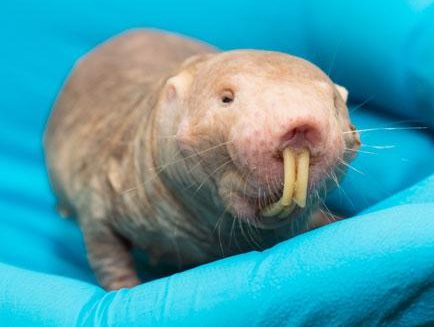Model organisms are critical to aging research. One particularly useful animal is the naked mole rat because it lives an exceptionally long-life with a maximum lifespan of 37 years. Not only that, they appear to not exhibit age-related decline in physiological capacity and are resistant to age-related diseases. One way to measure aging is through epigenetic changes. Using this method, a group of scientists showed that despite a phenotype of negligible senescence, the naked mole rat ages epigenetically.
This work is published in Nature Aging in the paper, “DNA methylation clocks tick in naked mole rats but queens age more slowly than nonbreeders.”
Naked mole rats (Heterocephalus glaber) have exceptional longevity for rodents of their size and are resistant to age-related diseases. Epigenetic changes—modifications that change gene expression but do not alter DNA itself—in naked mole rats have been linked to aging. However, a robust epigenetic “clock” of aging based on these modifications has yet to be presented.
Steve Horvath, PhD, professor of human genetics and biostatistics at the University of California, Los Angeles, and colleagues analyzed almost 400 samples from 11 tissue types taken from naked mole rats aged between 0 and 26 years old to measure the level of methylation.
The team created naked mole rat-specific methylation “clocks” across tissues and found that methylation estimates of age correlate very well with chronological age. The authors compared the methylation ages of nonbreeding females with those of the longer-lived, dominant breeding females (queens), observing that queens have slower methylation aging than nonbreeders.
The group observed strong epigenetic aging effects and developed seven highly accurate epigenetic clocks for several tissues (pan-tissue, blood, kidney, liver, skin clocks) and two dual-species (human–NMR) clocks. The skin clock, the study found, correctly estimated induced pluripotent stem cells derived from naked mole rat fibroblasts to be of prenatal age.
The authors concluded that although observable characteristics of naked mole rats suggest that they are “nonaging” mammals, this species does age epigenetically—similarly to other mammals.
The use of epigenetic clocks, they stated, might not only allow the age of wild naked mole rats to be estimated, but also aid studies investigating their potential as a model organism for aging, longevity, and disease suppression.



